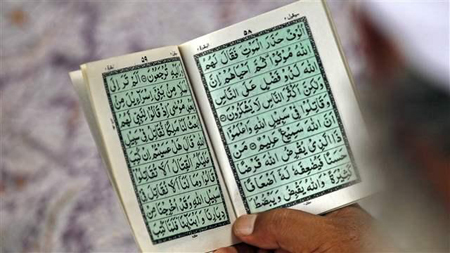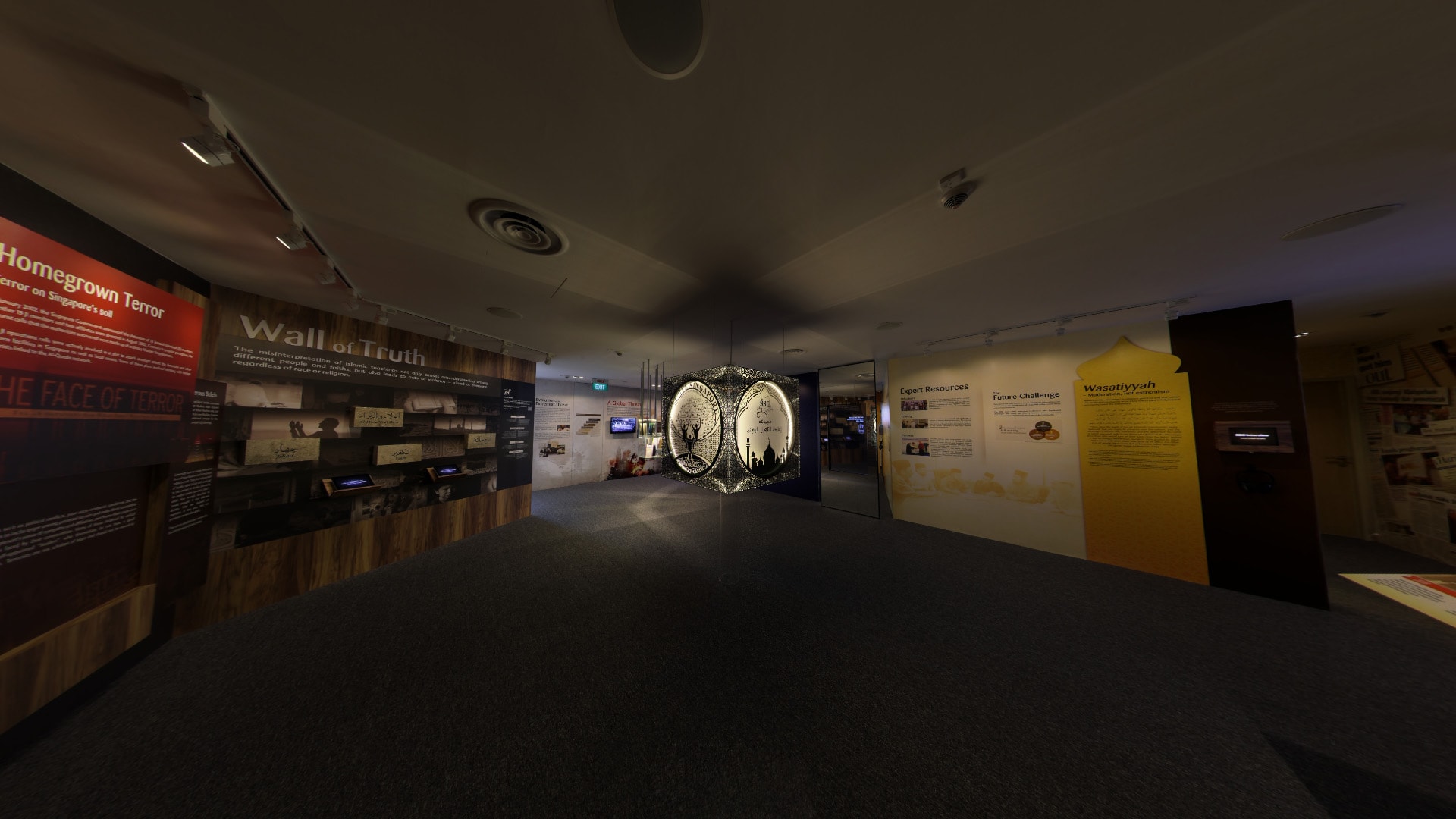Salafism
Because whosoever among you shall live after me, will see much discord. So hold fast to my Sunnah and the examples of the Rightly- Guided Caliphs who will come after me. ” [Abu Dawud and At- Tirmidhi]
Salafis, Salafism and Modern Salafism:
What lies behind a term?
By Mohamed Bin Ali
Synopsis
 The use of the term Salafi and Salafism in the contemporary period is ambiguous and in many ways confusing. The pivotal question of who or what group qualifies as Salafi remains in dispute. What is Salafism and who are the Muslims referred to as Salafis?
The use of the term Salafi and Salafism in the contemporary period is ambiguous and in many ways confusing. The pivotal question of who or what group qualifies as Salafi remains in dispute. What is Salafism and who are the Muslims referred to as Salafis?
Commentary
In recent years and in particular after the incident of 9/11, the study on Salafism has attracted much attention. This is because Salafism has been blamed for being the ideology that underpins terrorist violence. Ever since then, some Western writers and the media have failed to provide a balanced description and analysis of Salafism; thus propagating only a negative perspective of the term.
In actual fact, the term Salafism is a highly misunderstood term due to its amorphous nature. It represents a spectrum of thinking that includes violence on one end and a peaceful recourse on the other end. As such, efforts to provide a universally-accepted meaning of the term “Salafism”, have been an uphill struggle for scholars. The pivotal question of who or what group qualifies as Salafi remains in dispute.
It needs to be emphasized that Salafism is not alien to Islam. It is not a deviation of the religion. Salafism is but one of the many manifestations of Islam. It is important that we understand the meaning of Salafi and Salafism literally, historically and contextually.
What is Salafism and who is a Salafi?
Salafism (Arabic: Salafiyyah) derives from the Arabic term ‘salaf’. The linguistic meaning of ‘salaf’ is that ‘which has passed’ (salafa). In the Arabic language, those who preceded us from our forefathers are considered our salaf (plural: aslaf). The Quran also uses the word ‘salaf’ in this sense. It says: And We made them a people of the past (salafan) and an example to later ages” (Quran 43:56)
In the Islamic context, the term salaf refers to early Muslims who were companions of Prophet Muhammad, those who followed them and the scholars of the first three generations of Muslims. These early Muslims known as salaf al-salih (pious predecessors) enjoyed a special status among Muslims based on the Prophet’s saying, “The best century of my people are those of my century, then the following, then the following.”
Logically, their close proximity to the period of the Prophet means that they were closer to the original teachings and are therefore less corrupt. The Prophet’s companions received direct teaching from the Prophet and witnessed both the revelation and the context, while the subsequent two generations received the teachings of Islam according to the interpretation of the Companions.
Salafiyyah is known to be the manhaj(methodology) or way of the Salafis. In the modern context, the term Salafi refers to the practitioner of salafiyyah. Linguistically, the term salafi is an ascription to the salaf. A Salafi is one who ascribes himself/herself to the way and teachings of the salaf. Hence, when a person says “I am a Salafi”, he is saying that he ascribes himself to the salaf or the way/teachings of the salaf.
Modern Salafism
The term “modern Salafism” refers to a religious inclination or tendency towards a set of ideas and identity. By identity, we mean a belief system (ideology), ideas, values and meanings that reflect moral, social and political interestsand commitments of modern Salafis and constitutes their ideology of how the world and its system should work. This belief system is based on pure, undiluted teachings of the Quran, the sunnah (Prophetic tradition) and practices of the early Muslim generations (the salaf).Following the salaf is the reason for their self-designation as Salafis.
Modern Salafis are seen as individuals who strive for the revival of the historical legacy of Prophet Muhammad, his Companions and the early Muslim generations through materializing the authentic past in the current times and future.
Different strands of Modern Salafis
Modern Salafism is not homogenous. It consists of various strands and orientation – from moderate to extreme and from quietist to political activist to jihadis (or violent-oriented). While most Salafisare unanimous in matters of aqidah, they are divided mainly in issues of jurisprudence and politics. Abdullah Saeed distinguished four groups of modern Salafis – Modernist Salafis, Islamist Salafis, Puritanical Salafis and Militant Salafis in the contemporary period.
Modernist Salafism refers to denote the ideas that surfaced in late nineteenth century in Egypt and Damascus as a reaction to the prevailing spread of European ideas and sought to expose the roots of modernity within Muslim civilization. This type of Salafism is closely identified with modernist reformers such as Muhammad Abduh. Living in mid nineteenth century Egypt, Abduh witnessed a period when Western encroachments upon the Middle East were becoming more prevalent. He believed that this impacted the Muslim societies whose blind imitation of the Western ways resulted in moral decay and stagnation across many Muslim communities.
Together with other reformers in his time, namely Jamal al-Din al-Afghani, Muhammad Rashid Rida, Muhammad al-Shawkani and Jalal al-San’ani, they suggested that the solution lies in reviewing the original sources of the religion. This include, besides the Quran and Sunnah, adherence to the practices of the salafal-salih. These early reformers however, did not advocate that the Muslims cut themselves off completely from the Western world. In fact, they favour the reformation of Islam via a reinterpretation of the early Islamic sources vis-à-vis modern methodologies, resources and way of life.
Islamist Salafis or sometimes known as politico Salafis are Salafis who emphasize the application of the Salafi creed to the political arena. An example of this group of Salafis is the Muslim Brotherhood and the Hizb Al Ummah Party in Egypt. Puritanical Salafism is dominantly associated with Saudi Arabia and believed to have been established by Muhammad Ibn Abd al-Wahhab. It is a more traditional type of Salafism and adherents of this particular form of Salafism follow a rather literal, straight-forward and sometimes uncompromising form of Islam. These Salafis look to Ibn Taymiyyah, not the nineteenth century figures of Muhammad Abduh, Al-Afghani and Rashid Rida. Finally, militant Salafis who are also known as Jihadi Salafistake a more militant approach that argue that the current context calls for violence and revolution. These Salafis are often associated with individuals such Osama Bin laden and Ayman Al-Zawahiri.
Religious Legitimacy, A Nuanced Approach
The various Salafi groups always refer to different religious scholars and texts for legitimacy and intellectual guidance. Their different religious interpretations have profound implications for the political, social and economic behavior of their followers. Disagreement and disputes within these groups are apparent. Can a “good” Muslim listen to music? Should a “good” Muslim refrain from buying Israeli goods and products? Is it acceptable for a “good” Muslim to fight to overthrow a Muslim government who fail to implement the shariahcompletely? Each Salafi subset provides its adherents with different answers and religious justifications to these and a variety of other questions.
The categories of modern Salafis mentioned above are by no means scientific. The categorization provides nothing more than a rough topography of the Salafis terrain in order to assist observers to speak in more nuanced terms about the ideological trends of modern Salafis. This distinction between the different strands of modern Salafis will also prevent the alienation of the peaceful Salafis from mainstream life, who form a majority among the different Salafi strands.


